"I don't know who will read this. I guess someone will find it eventually. Maybe in a hundred years or so." -Mark Watney
174 posts
Latest Posts by inter-stellxr-blog - Page 4






Thanks, Doc

Landing site recommended for ExoMars 2018
Oxia Planum has been recommended as the primary candidate for the landing site of the ExoMars 2018 mission.
ExoMars 2018, comprising a rover and surface platform, is the second of two missions making up the ExoMars programme, a joint endeavour between ESA and Russia’s Roscosmos. Launch is planned for May 2018, with touchdown on the Red Planet in January 2019.
The main goal for the rover is to search for evidence of martian life, past or present, in an area with ancient rocks where liquid water was once abundant. A drill is capable of extracting samples from up to 2 m below the surface. This is crucial, because the present surface of Mars is a hostile place for living organisms owing to the harsh solar and cosmic radiation. By searching underground, the rover has more chance of finding preserved evidence.
Read full article.


the sunset was violently sudden & spectacular tonight. these pictures were taken abt 2 minutes apart










10 Intriguing Worlds Beyond Our Solar System
In celebration of the 20th anniversary of the first confirmed planet around a sun-like star (aka exoplanet), a collection of some interesting exoplanets has been put together. Some of these are rocky, some are gaseous and some are very, very cold. But there’s one thing each these strange new worlds have in common: All have advanced scientific understanding of our place in the cosmos. Check out these 10 exoplanets, along with artist’s concepts depicting what they might look like. For an extended list of 20 exoplanets, go HERE.
1. Kepler-186f

Kepler-186f was the first rocky planet to be found within the habitable zone – the region around the host star where the temperature is right for liquid water. This planet is also very close in size to Earth. Even though we may not find out what’s going on at the surface of this planet anytime soon, it’s a strong reminder of why new technologies are being developed that will enable scientists to get a closer look at distance worlds.
More Info
2. HD 209458 b (nickname “Osiris”)

The first planet to be seen in transit (crossing its star) and the first planet to have it light directly detected. The HD 209458 b transit discovery showed that transit observations were feasible and opened up an entire new realm of exoplanet characterization.
More info
3. Kepler-11 system

This was the first compact solar system discovered by Kepler, and it revealed that a system can be tightly packed, with at least five planets within the orbit of Mercury, and still be stable. It touched off a whole new look into planet formation ideas and suggested that multiple small planet systems, like ours, may be common.
More info
4. Kepler-16b

A real-life “Tatooine,” this planet was Kepler’s first discovery of a planet that orbits two stars – what is known as a circumbinary planet.
More info
5. 51 Pegasi b

This giant planet, which is about half the mass of Jupiter and orbits its star every four days, was the first confirmed exoplanet around a sun-like star, a discovery that launched a whole new field of exploration.
More info
6. CoRoT 7b

The first super-Earth identified as a rocky exoplanet, this planet proved that worlds like the Earth were indeed possible and that the search for potentially habitable worlds (rocky planets in the habitable zone) might be fruitful.
More info
7. Kepler-22b

A planet in the habitable zone and a possible water-world planet unlike any seen in our solar system.
More info
8. Kepler-10b

Kepler’s first rocky planet discovery is a scorched, Earth-size world that scientists believe may have a lava ocean on its surface.
More info
9. Kepler-444 system

The oldest known planetary system has five terrestrial-sized planets, all in orbital resonance. This weird group showed that solar systems have formed and lived in our galaxy for nearly its entire existence.
More info
10. 55 Cancri e

Sauna anyone? 55 Cancri e is a toasty world that rushes around its star every 18 hours. It orbits so closely – about 25 times closer than Mercury is to our sun – that it is tidally locked with one face forever blistering under the heat of its sun. The planet is proposed to have a rocky core surrounded by a layer of water in a “supercritical” state, where it is both liquid and gas, and then the whole planet is thought to be topped by a blanket of steam.
More info
spoopy
You're walking in the woods. No one is around and your phone is dead. Out of the corner of your eye you spot her.
Poot Lovato
Astronomy Night at the White House
NASA took over the White House Instagram today in honor of Astronomy Night to share some incredible views of the universe and the world around us. Check out more updates from the astronauts, scientists, and students on South Lawn.

Here’s a nighttime view of Washington, D.C. from the astronauts on the International Space Station on October 17. Can you spot the White House?

Check out this look at our sun taken by NASA’s Solar Dynamics Observatory. The SDO watches the sun constantly, and it captured this image of the sun emitting a mid-level solar flare on June 25. Solar flares are powerful bursts of radiation. Harmful radiation from a flare can’t pass through Earth’s atmosphere to physically affect humans on the ground. But when they’re intense enough, they can disturb the atmosphere in the layer where GPS and communications signals travel.

Next up is this incredible view of Saturn’s rings, seen in ultraviolet by NASA’s Cassini spacecraft. Hinting at the origin of the rings and their evolution, this ultraviolet view indicates that there’s more ice toward the outer part of the rings than in the inner part.

Take a look at the millions of galaxies that populate the patch of sky known as the COSMOS field, short for Cosmic Evolution Survey. A portion of the COSMOS field is seen here by NASA’s Spitzer Space Telescope. Even the smallest dots in this image are galaxies, some up to 12 billion light-years away. The picture is a combination of infrared data from Spitzer (red) and visible-light data (blue and green) from Japan’s Subaru telescope atop Mauna Kea in Hawaii. The brightest objects in the field are more than ten thousand times fainter than what you can see with the naked eye.

This incredible look at the Cat’s Eye nebula was taken from a composite of data from NASA’s Chandra X-ray Observatory and Hubble Space Telescope. This famous object is a so-called planetary nebula that represents a phase of stellar evolution that the Sun should experience several billion years from now. When a star like the Sun begins to run out of fuel, it becomes what is known as a red giant. In this phase, a star sheds some of its outer layers, eventually leaving behind a hot core that collapses to form a dense white dwarf star. A fast wind emanating from the hot core rams into the ejected atmosphere, pushes it outward, and creates the graceful filamentary structures seen with optical telescopes.

This view of the International Space Station is a composite of nine frames that captured the ISS transiting the moon at roughly five miles per second on August 2. The International Space Station is a unique place—a convergence of science, technology, and human innovation that demonstrates new technologies and makes research breakthroughs not possible on Earth. As the third brightest object in the sky, the International Space Station is easy to see if you know when to look up. You can sign up for alerts and get information on when the International Space Station flies over you at spotthestation.nasa.gov. Thanks for following along today as NASA shared the view from astronomy night at the White House. Remember to look up and stay curious!




T-51 days (October 14) - OA-4 Cygnus service module arrives at KSC Marking a major milestone in its prelaunch processing flow, the service module for the Cygnus spacecraft’s return to flight arrived at Kennedy Space Center earlier this week. The pressurized cargo module for the OA-4 mission arrived at Kennedy in early August, and technicians have been checking out the module ahead of cargo stowing. OA-4 marks a significant shift in the Cygnus program, not just because it is the spacecraft’s return to flight, but also the first flight of the Enhanced Cygnus. The cargo module is 3.9 feet longer than the initial Standard Cygnus, allowing the spacecraft to transport over 3,300 extra pounds of cargo. The Service Module also boasts new Orbital ATK-made Ultraflex solar arrays, which are lighter than the original rectangular arrays made by DutchSpace. The image below shows a comparison between the two versions of the spacecraft, with the Enhanced Cygnus on the right.

Final assembly and cargo stowage is expected to occur in late October and early November. Encapsulation inside an Atlas V 400-series payload fairing will occur in mid November, followed by rollout to SLC-41 and vehicle integration in late November. Currently, the launch of OA-4 is scheduled for December 3, though that date may move up or be pushed back depending on various factors. It will be the first flight of the spacecraft since an October 29, 2014 launch failure that destroyed the spacecraft and subsequently grounded the program. The enhanced Antares 200 rocket is undergoing final integration and assembly at Wallops Island, Virginia, and Orbital ATK teams are preparing for a period of pad testing. The next flight of Cygnus on an Antares is scheduled for some time in the first half of 2016. Until then, Orbital ATK purchased two Atlas V 401 rockets to launch their enhanced Cygnus spacecraft; these missions are designated OA-4 and OA-5. The second flight is slated for sometime in spring of 2016.

October 13, 1966 – Gemini 12 astronaut Buzz Aldrin undergoes zero-gravity training aboard an Air Force KC-135 vomit comet. (NASA)
It’s a U.S. Record! Cumulative Days in Space: 383

Today, Astronaut Scott Kelly has broken the record for longest time spent in space by a U.S. astronaut! Over the course of his four missions, Kelly has spent 383 cumulative days in space. This record was previously held by Astronaut Mike Fincke, with 382 days in space over three flights. Here are some more fun facts about this milestone:
4: The number of humans that have spent a year or more in orbit on a single mission
215 Days: The record currently held by Mike Lopez-Alegria for most time on a single spaceflight by U.S. astronaut. On Oct. 29, Kelly will break this record
377 Days: The current record for most days in space by a U.S. female astronaut, held by Peggy Whitson
879 Days: The record for most cumulative days in space by a human, currently held by Russian cosmonaut Gennady Padalka

Why Spend a Year in Space?
Kelly’s One-Year Mission is an important stepping stone on our journey to Mars and other deep space destinations. These investigations are expected to yield beneficial knowledge on the medical, psychological and biomedical challenges faced by astronauts during long-duration spaceflight.
Kelly is also involved in the Twins Study, which consists of ten separate investigations that are being conducted with his twin brother, who is on Earth. Since we are able to study two individuals who have the same genetics, but are in different environments for one year, we can gain a broader insight into the subtle effects and changes that may occur in spaceflight.
For regular updates on Kelly’s one-year mission aboard the space station, follow him on social media: Facebook, Twitter, Instagram.
Make sure to follow us on Tumblr for your regular dose of space: http://nasa.tumblr.com
What’s Enceladus?
Before we tell you about Enceladus, let’s first talk about our Cassini spacecraft…
Our Cassini mission to Saturn is one of the most ambitious efforts in planetary space exploration ever mounted. Cassini is a sophisticated robotic spacecraft orbiting the ringed planet and studying the Saturnian system in detail.

Cassini completed its initial four-year mission to explore the Saturn System in June 2008. It has also completed its first mission extension in September 2010. Now, the health spacecraft is making exciting new discoveries in a second extension mission!
Enceladus

Enceladus is one of Saturn’s many moons, and is one of the brightest objects in our solar system. This moon is about as wide as Arizona, and displays at least five different types of terrain. The surface is believed to be geologically “young”, possibly less than 100 million years old.
Cassini first discovered continually-erupting fountains of icy material on Enceladus in 2005. Since then, the Saturn moon has become one of the most promising places in the solar system to search for present-day habitable environments.

Scientists found that hydrothermal activity may be occurring on the seafloor of the moon’s underground ocean. In September, it was announced that its ocean –previously thought to only be a regional sea – was global!
Since Cassini is nearing the end of its mission, we are able to make a series of three close encounters with Enceladus, one of Saturn’s moons.
Close Encounters
On Oct. 14, Cassini performed a mid-range flyby of Enceladus, but the main event will take place on Oct. 28, when Cassini will come dizzyingly close to the icy moon. During this flyby, the spacecraft will pass a mere 30 miles above the moon’s south polar region!

This will be the deepest-ever dive through the moon’s plume of icy spray, where Cassini can collect images and valuable data about what’s going on beneath the frozen surface.
Make sure to follow us on Tumblr for your regular dose of space: http://nasa.tumblr.com




T-51 days (October 14) - OA-4 Cygnus service module arrives at KSC Marking a major milestone in its prelaunch processing flow, the service module for the Cygnus spacecraft’s return to flight arrived at Kennedy Space Center earlier this week. The pressurized cargo module for the OA-4 mission arrived at Kennedy in early August, and technicians have been checking out the module ahead of cargo stowing. OA-4 marks a significant shift in the Cygnus program, not just because it is the spacecraft’s return to flight, but also the first flight of the Enhanced Cygnus. The cargo module is 3.9 feet longer than the initial Standard Cygnus, allowing the spacecraft to transport over 3,300 extra pounds of cargo. The Service Module also boasts new Orbital ATK-made Ultraflex solar arrays, which are lighter than the original rectangular arrays made by DutchSpace. The image below shows a comparison between the two versions of the spacecraft, with the Enhanced Cygnus on the right.

Final assembly and cargo stowage is expected to occur in late October and early November. Encapsulation inside an Atlas V 400-series payload fairing will occur in mid November, followed by rollout to SLC-41 and vehicle integration in late November. Currently, the launch of OA-4 is scheduled for December 3, though that date may move up or be pushed back depending on various factors. It will be the first flight of the spacecraft since an October 29, 2014 launch failure that destroyed the spacecraft and subsequently grounded the program. The enhanced Antares 200 rocket is undergoing final integration and assembly at Wallops Island, Virginia, and Orbital ATK teams are preparing for a period of pad testing. The next flight of Cygnus on an Antares is scheduled for some time in the first half of 2016. Until then, Orbital ATK purchased two Atlas V 401 rockets to launch their enhanced Cygnus spacecraft; these missions are designated OA-4 and OA-5. The second flight is slated for sometime in spring of 2016.

Saturn V Cutaway ~ This fascinating Saturn V cutaway drawing is by far the most detailed I’ve ever come across. It’s an original, official Boeing engineering breakdown by Don Sprague and includes everything you ever wanted to know about the Saturn V’s internal workings – right down to millimetre accurate measurements …





A Reddit user captured several phenomenal photos of the solar eclipse, from the cockpit of an airplane.

We are not allowed to collect water from Mars. The Outer Space Treaty of 1967 forbids every nation in the world from sending humans or robots near celestial water sources for fear of contaminating them with life from Earth. Source

The forward bulkhead and tunnel for Exploration Mission 1 undergoing paint priming, October 9, 2015. The EM-1 Orion capsule is being fabricated at the Michoud Assembly Facility in New Orleans, Louisiana. Seven major components are welded together to create the capsule’s pressure vessel. It then gets shipped to Kennedy Space Center in Florida where it undergoes final assembly and outfitting of key systems.

Boeing 747 carrying space shuttle Endeavor

One Last Look At The Space Shuttle Endeavour’s Cockpit Before It’s Shut Down Forever
Solar System: Top 5 Things to Know This Week
1. A Ceres of Fortunate Events

Our Dawn mission continues its exploration at Ceres, and the team is working with the data coming back to Earth, looking for explanations for the tiny world’s strange features. Follow Dawn’s expedition HERE.
2. Icy Moon Rendezvous
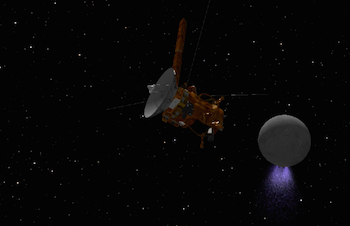
One of the most interesting places in the entire solar system is Saturn’s moon Enceladus, with its underground ocean and spectacular geyser plume. This month, the Cassini spacecraft will be buzzing close by Enceladus several times, the last such encounters of the mission. On October 14, Cassini will perform a targeted flyby at a distance of just 1,142 miles (1,838 kilometers) over the moon’s northern latitudes. Ride along with Cassini HERE.
3. Make Your Own Mars Walkabout
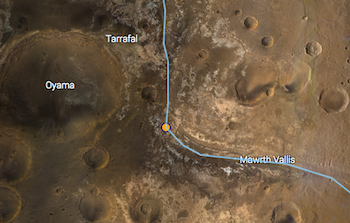
You can retrace Opportunity’s journey, see where the Curiosity rover is now, or even follow along with fictional astronaut Mark Watney from The Martian movie using the free online app MarsTrek. The app lets you zoom in on almost any part of the planet and see images obtained by our spacecraft, so you can plan your on Red Planet excursion. Take a hike HERE.
4. Elusive Features on Jupiter

New imagery from our Hubble Space Telescope is capturing details never before seen on Jupiter. High-resolution maps and spinning globes, rendered in the 4K Ultra HD format, reveal an elusive wave and changes to Jupiter’s Great Red Spot. Explore Jupiter HERE.
5. Mr. Blue Sky

Another week, another amazing picture from Pluto. The first color images of Pluto’s atmospheric hazes, returned by our New Horizons spacecraft last week, reveal that the hazes are blue. Who would have expected a blue sky in the Kuiper Belt? Most of the data collected during July’s Pluto flyby remains aboard the spacecraft, but the team publishes new batches of pictures and other findings on a weekly basis. Keep up with the latest HERE.
Make sure to follow us on Tumblr for your regular dose of space: http://nasa.tumblr.com








What Have We Learned About Pluto?
Earlier this year on July 14, our New Horizons spacecraft successfully flew by Pluto. During this encounter, it collected more than 1,200 images of the dwarf planet and tens of gigabits of data. The intensive downlinking of this information began on Sept. 5, and will continue for around a year. With the information being returned for the duration of a year, we still have a lot more to learn about Pluto. Here are a few things we’ve discovered so far:
Pluto’s Heart

An image captured by New Horizons around 16 hours before closest approach displays Pluto’s “heart”. This stunning image of one of the planet’s most dominate features shows us that the heart’s diameter is about the same distance as from Denver to Chicago. This image also showed us that Pluto is a complex world with incredible geological diversity.
Icy Plains

Pluto’s vast icy plain, informally called Sputnik Planum, resembles frozen mud cracks on Earth. It has a broken surface of irregularly-shaped segments, bordered by what appear to be shallow troughs. In other areas, the surface appears to be etched by fields of small pits that may have formed by a process called sublimation, which is when ice turns directly from solid to gas, just as dry ice does on Earth.
Majestic Mountains

Images from the spacecraft display chaotically jumbled mountains that only add to the complexity of Pluto’s geography. The rugged, icy mountains are as tall as 11,000 feet high.
Color Variations

This high-resolution enhanced color view of Pluto combines, blue red and infrared images taken by the New Horizons spacecraft. The surface of the dwarf planet has a remarkable range of subtle color variations. Many landforms have their own distinct colors, telling a complex geological and climatological story of the planet.
Foggy Haze and Blue Atmosphere

Images returned from the New Horizons spacecraft have also revealed that Pluto’s global atmospheric haze has many more layers than scientists realized. The haze even creates a twilight effect that softly illuminates nightside terrain near sunset, which makes them visible to the cameras aboard the spacecraft. Today, a new announcement was made about Pluto’s atmosphere after the most recent image returned from New Horizons showed that Pluto’s hazes are blue. The haze particles themselves are likely gray or red, but they way they scatter blue light has created this tint.
Water Ice

In another finding announced today, New Horizons has detected numerous small, exposed regions of water ice on Pluto. Scientists are eager to understand why water appears exactly where it does, and not in other places.
Stay updated on New Horizons findings by visiting the New Horizons page. You can also keep track of Pluto News on the New Horizons Blog.
Make sure to follow us on Tumblr for your regular dose of space: http://nasa.tumblr.com





NASA just released thousands of high-res Apollo mission photos
The space research agency’s Project Apollo Archive made a massive update to its Flickr account Sunday, adding a trove of more than 8,000 photos taken during Moon missions from 1969 to 1972.
Five Orion Technologies That Will Help Us Get Home From Mars
Orion is a key piece of NASA’s journey to Mars. The spacecraft, which was first tested in space last year, will enable crew to travel to deep space on the journey to the Red Planet and bring astronauts home safely. It’s a critical technology we’ll use to help NASA test, demonstrate and hone the skills and capabilities we need to operate farther and farther away from Earth.

Environmental Control and Life Support Systems
Water. Air. A temperate environment. A bathroom. These are some of the things astronauts need to survive the long journey back to Earth from Mars. NASA has developed an environmental control and life support system on the International Space Station and is designing such a system for Orion. The system can recycle carbon dioxide and make it back into useable air and process urine to make it into potable water, for example. Right now on the space station, engineers and astronauts are testing a filtering system for efficiency and reliability on long-duration missions. The investigation uses an amine-based chemical compound combined with the vacuum of space to filter and renew cabin air for breathing. When astronauts travel home from Mars, they won’t be able to count on the arrival of spare parts or extra supplies if something breaks or gets depleted, so engineers are hard at work developing reliable and robust technologies to keep crews alive and healthy in space.

Radiation protection
Astronauts traveling to and from Mars will be far away from the protective shield of Earth’s atmosphere and magnetic field, and their spacecraft and its systems will need to be able to protect against the full spectrum of space radiation. NASA is working now to develop protective methods.
Orion will use items already on board to protect the crew and create a temporary shelter in the aft bay of the spacecraft, which is the inside portion closest to the heat shield. This location minimizes the amount of equipment to move around while maximizing the amount of material that can be placed between the crew and the outside environment. The items that will be used include supplies, equipment and launch and re-entry seats as well as water and food. By using the items already on board, the astronauts benefit from additional shielding without adding to Orion’s mass.

Power and Propulsion
A spacecraft needs power and propulsion in space to refine its trajectory during the trip back to Earth. Orion will include a service module capable of helping the spacecraft make any necessary mid-course corrections. A service module provides power, heat rejection, in-space propulsion and water and air for crews, and NASA is working with ESA (European Space Agency) to provide Orion’s service module for its next mission in a partnership that will also bring international cooperation on the journey to Mars. The service module will provide propulsion, batteries and solar arrays to generate power and contain all the air, nitrogen and water for crews.
The ESA-provided element brings together new technology and lightweight materials while also taking advantage of spaceflight-proven hardware. For example, ESA is modeling several key components – like the solar arrays – from technology developed for its Automated Transfer Vehicle-series of cargo vessels, which delivered thousands of pounds of supplies to the space station during five missions between 2008 and 2015. NASA is providing ESA one of the Orbital Maneuvering System pods that allowed space shuttles to move in space to be upgraded and integrated into the service module.

Heat shield
When an uncrewed Orion was tested in space in 2014, the heat shield withstood temperatures of about 4,000 degrees Fahrenheit, or about twice as hot as molten lava. That heat was generated when the spacecraft, traveling at about 20,000 mph back toward our planet, made its way through Earth’s atmosphere, which acts as a braking mechanism to cause friction and slow down a returning spacecraft. Its speed was about 80 percent of what Orion will experience when it comes back from missions near the moon and will need to be even more robust for missions where return speeds, and therefore reentry temperatures, are higher.
Orion’s heat shield is built around a titanium skeleton and carbon fiber skin that provide structural support. A honeycomb structure fits over the skin with thousands of cells that are filled with a material called Avcoat. That layer is 1.6 inches at its thickest and erodes as Orion travels through Earth’s atmosphere.

Parachutes
A spacecraft bringing crews back to Earth after a long trip to Mars will need a parachute system to help it slow down from its high-speed reentry through the atmosphere to a relatively slow speed for splashdown in the ocean. While Earth’s atmosphere will initially slow Orion down from thousands of miles per hour to about 325 mph, its 11 parachutes will deploy in precise sequence to further slow the capsule’s descent. There are three forward bay cover parachutes that pull a protective cover off the top of the capsule, two drogue parachutes that deploy to stabilize the spacecraft, and three pilot parachutes that are used to pull out Orion’s three orange and white main parachutes that are charged with slowing the spacecraft to its final landing speed. The main parachutes are so big that the three of them together nearly cover an entire football field.
Engineers are currently building the Orion spacecraft that will launch on the world’s most powerful rocket, the Space Launch System, and will enable astronauts to travel farther into space than ever before on the journey to Mars.
Visit NASA on the Web for more information about Orion and NASA’s journey to Mars. http://www.nasa.gov/orion
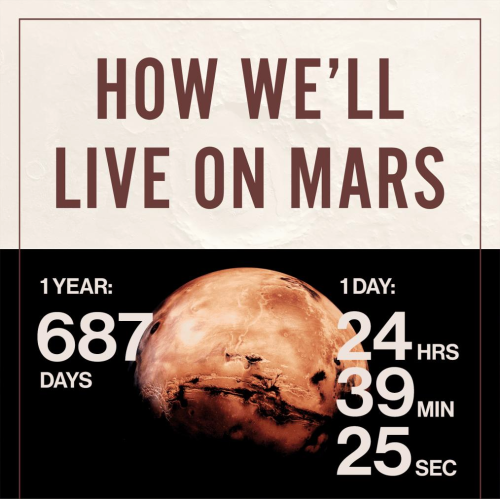
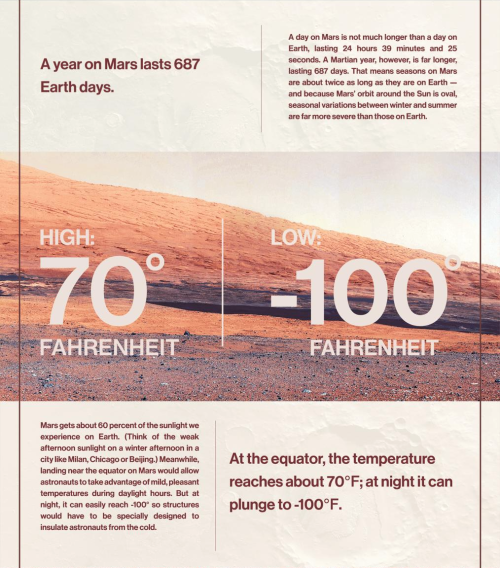
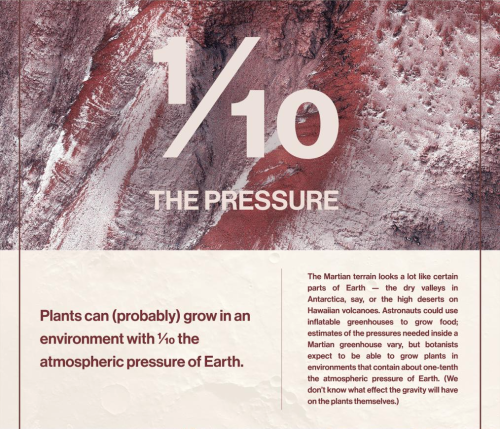
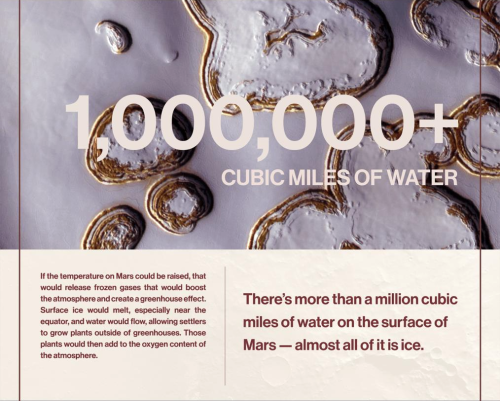
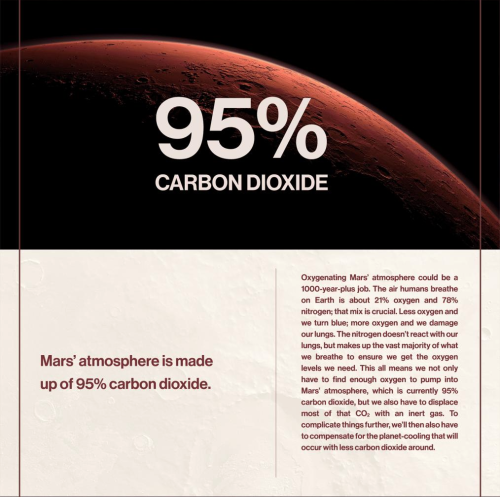

Life on Mars








(photos by Robdogbird)


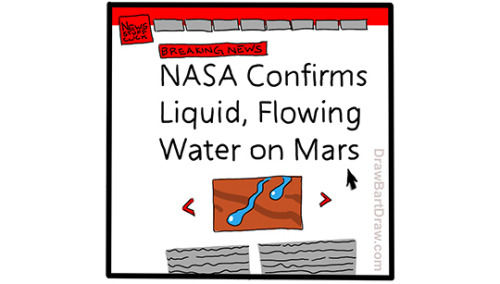
by Draw Bart Draw